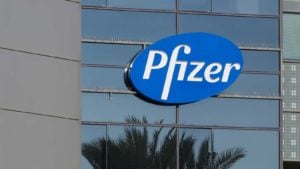The S&P 500 has been trending higher by 7% in the first two months of 2024. While sentiments seem positive, the markets need to navigate blowing macroeconomic headwinds. Furthermore, high volatility in the markets could occur in the coming quarters. This can be due to anxiety related to inflation playing a spoilsport and delaying potential expansionary policies.
From an investment perspective, I would remain overweight on blue-chip stocks. Moveover, it makes sense to have several low-beta stocks in the portfolio. While growth stocks can remain significantly volatile, it’s the low-beta stocks providing stability and protection from capital erosion.
Following are three low-beta stock to buy now. I have screened blue-chip stocks that trade at a valuations gap. Therefore, the downside is capped and total returns from these stocks can be attractive in the long term. Let’s discuss the reasons to be bullish on these low-beta blue-chip stocks.
Barrick Gold (GOLD)

Barrick Gold (NYSE:GOLD) is among the top low-beta stocks to buy. Currently, GOLD stock has a beta of 0.4. Besides the low volatility factor, the stock trades at an attractive forward price-earnings ratio of 15.6. A dividend yield of 2.73% is a bonus and I believe that healthy dividend growth is in the cards.
An important point to note is that gold looks strong above $2,000 an ounce. Factors of inflation, geopolitical tensions, central bank buying, and potential expansionary policies will ensure that gold remains in an uptrend. Barrick Gold, as one of the largest gold miners, is positioned to benefit.
Additionally, last year Barrick reported operating cash flow of $3.7 billion. With the possibility of gold trending higher coupled with production growth visibility, expect OCF to increase. This will leave ample headroom for dividend growth and aggressive share buybacks.
Lockheed Martin (LMT)

Lockheed Martin (NYSE:LMT) is another quality name among low-beta stocks to accumulate. LMT stock has a beta of 0.49 and trades at a forward price-earnings ratio of 16.5. An undervalued blue-chip stock from a sector with positive tailwinds is a grab at current levels.
While LMT stock has remained sluggish, business developments have been positive. Rising geopolitical tensions have translated into accelerated order intake. As of Q4 2023, Lockheed reported an order backlog of $160.6 billion. Last year, the company reported free cash flow of $6.3 billion. Also, Lockheed has guided for FCF in a similar range for 2024. As the backlog swells, clear FCF visibility is likely for the next few years.
Further, the company will be positioned to invest in next-generation defense technology that’s a potential growth catalyst. Some areas of research include hypersonic solutions, and directed energy. Overall, I expect healthy total returns from LMT stock in the next five years.
Pfizer (PFE)

Pfizer (NYSE:PFE) is a beaten down low-beta stock worthy of consideration. PFE stock has a beta of 0.57 and looks undervalued at a forward price-earnings ratio of 12. The reason for correction in PFE stock is revenue de-growth in a post-pandemic era. Additionally, several blockbuster drugs have gone off-patent which will likely impact growth. However, I believe that negatives have been discounted.
To boost growth, Pfizer has been working on two fronts. First, the company is investing heavily in the current clinical pipeline. This includes 112 new molecular entities with 65 in the second and third phase. As new drugs are commercialized, growth becomes visible. New molecular entities are likely to contribute to $20 billion in incremental revenue by 2030.
Also, Pfizer has been aggressive on the acquisition front in the last 12 to 18 months. The recent addition of Seagen has boosted the company’s presence in the oncology segment. PFE expects incremental revenue of $25 billion from new business deals by 2030.
On the date of publication, Faisal Humayun did not hold (either directly or indirectly) any positions in the securities mentioned in this article. The opinions expressed in this article are those of the writer, subject to the InvestorPlace.com Publishing Guidelines.

